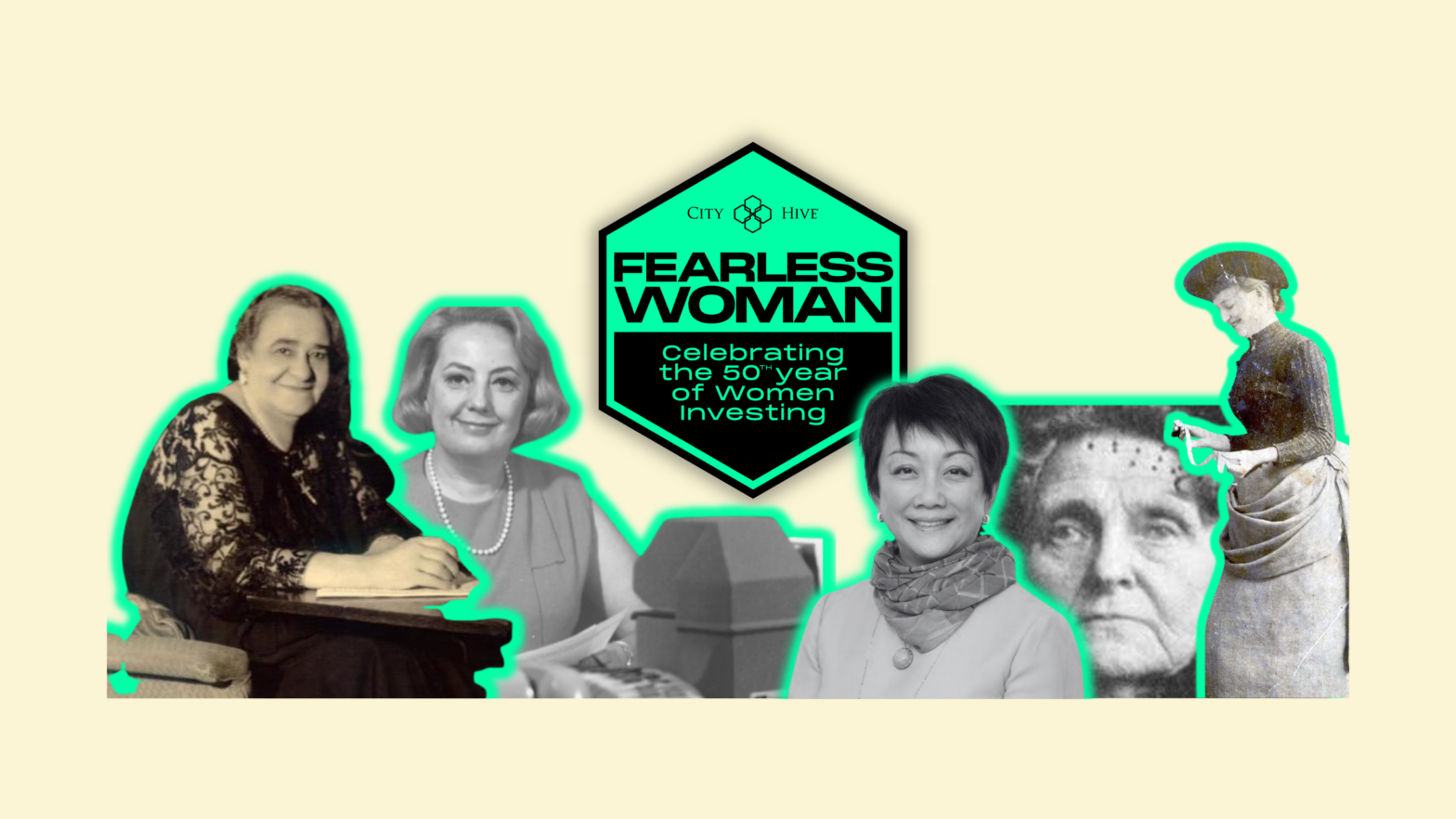Even before they were granted the vote, women worldwide were still finding ways to impact the world of investing.
Here, as part of its Fearless Woman Campaign, City Hive takes a look at some of the women who made history, from the early innovators to the modern women transforming the world stock exchanges.
The early pioneers – stockbroking and séances
In 1870, Victoria Woodhull became the first female stockbroker through an interesting source – spiritualism. Both Victoria and her sister Tennessee Claflin were raised by faith-healing parents who proclaimed their daughters to be mediums capable of speaking to the dead.
The sisters connected with railroad mogul Cornelius Vanderbilt and, under a pretext of a ‘séance’ with the dead, offered him investing advice based on insider information. Vanderbilt was so impressed that he offered them financial help to open Woodhull, Claflin, & Co, the first for-women-by-women brokerage firm in the US.
Previously, women could only invest via men – who, in turn, pocketed a healthy commission. Clearly, women were determined to make changes; two years later, and having cemented her status as a millionaire, Woodhill used the profits from the firm to run for the US Presidency.
A stock exchange away from the stock exchange
Frustrated at being blocked from traditional investment venues like the New York Stock Exchange, Mary Gage decided to do it herself and, in 1880, started her female-only exchange. The exchange cut out the middlemen, slashing the high commissions men had been collecting to invest on women’s behalf whilst also giving women the power to make their own investing decisions.
At the time, stockbroking was widely seen as an immoral career, even for men, so the prospect of women entering the fray left many enraged. Critics tried hard to discourage people from investing in the women-only exchange, claiming that women were too emotionally unstable to handle market fluctuations!
The ‘witch’ of Wall Street
Dubbed the richest woman in America during the Glided Age, Hetty Green was known for her strategy of buy and hold investing over the long run, a method also used by Warren Buffet. However, while Buffet is universally praised for his investment savvy, Hetty received quite the opposite response. She was heavily criticised for her wealth, her ‘miserly attitude’ and her alleged propensity for swearing profusely. This all contributed to her derogatory nickname ‘The Witch of Wall Street.’
See also: – ‘Breaking the Wall Street stigma’: Highlights from Women in Asset Management US Summit
The overlooked pioneer
The rarely mentioned Maggie Walker was the daughter of a former slave who founded the St. Luke Penny Savings Bank in 1903. Launched in a sea of hostility and segregation at a time when most banks would not even lend to Black borrowers, St Luke’s offered loans of as little as $5 and famously opened late six days a week to accommodate labourers working long hours. While her endeavours were far away from the relative glamour of Manhattan and the NYSE, Maggie’s enduring legacy speaks for itself. St Luke’s operated as the US’s longest black run, independently owned bank until it was bought out in 2005.
The new wave – the ‘first lady’ of Wall Street
Even after women were allowed onto the investing floor in the 1940s, it took another two decades and nine rejections for Muriel ‘Mickey’ Siebert to become the first woman to purchase a seat on the New York Stock Exchange in 1967.
Muriel’s admittance into the NYSE was dependent on a $445,000 fee payment, $300,000 of which had to be secured via a bank loan, a task no previous occupant had ever been asked to fulfil. After securing a loan from Chase Manhattan Bank, Muriel made history and became known as The First Lady of Wall Street. She remained in her role until her death in 2013, aged 84.
The North American history maker
Canada’s Jean Davey was the first-ever female licensed stockbroker in North America in the 1960s. Davy began her career stuffing envelopes at General Motors, then became a secretary for the President, before moving on to sales and then into investing. By the time she retired in 2004, she was a Vice President and Director of Scotia McLeod, a division of the multinational Scotiabank.
The modern mavens
NYSE’s youngest female trader made history in more ways than one. Lauren Simmons made history herself in 2017 when aged 22, she became the NYSE’s youngest and only full-time female trader. She was also only the second African American woman to work as an NYSE trader in its 226 years.
Hong Kong’s 50:50 model
Having appointed its third consecutive female CEO in 2021, Hang Seng Bank, the creators of the Hang Seng Index, the flagship index for stocks traded on the Hong Kong stock exchange, appointed Irene Lee Yun Lien as the first-ever female chair in 2021. The board of the bank is incidentally currently 50% female.
The ‘lean in’ exchange
The Johannesburg Stock Exchange appointed its first female CEO, Nicky Newton King, in 2012. Three years later, the JSE was winning awards and acclaim for boasting a female Chair, CEO and chief financial officer and a board that was 50% female. The JSE has since been dubbed the ‘lean in exchange’ for its gender balance.
Brazil’s women-focused challenger bank
With the Brazilian gender gap for financial services widening, academic researcher Dr Vanise Zimmer set up Elas, a challenger bank made specifically for women in 2020. The bank bases itself on financial inclusion in the investment market. It aims to capture the specific needs of female employees and entrepreneurs alike, helping women get onto the investment ladder.
ESG Clarity, What Investment and DiversityQ are delighted to support the City Hive campaign Fearless Woman to celebrate 50 years of women investing in the UK.








